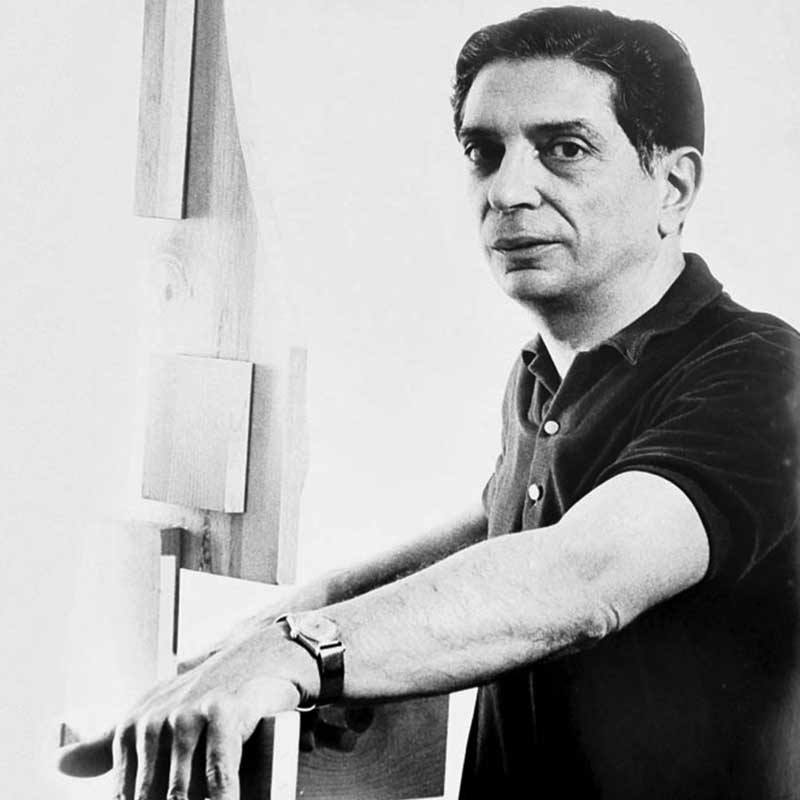
Adi Davierwala (1922-1975) was born in Bombay and was formally trained as a pharmaceutical chemist. He only began experimenting with sculpture in the late 1940s and was relatively self-taught but received some guidance on the basic techniques from N.G. Pasare. He became a full-time sculptor in 1959, after receiving critical acclaim for his work for a decade.
His edgy, futuristic works were inspired both by his training in engineering and technology, as well as Greek mythology and Christian symbolism. Throughout his career, his work consisted of a diverse array of media, including stone, wood, marble, lead, bronze, Perspex, and magnets. He was gifted and innovative enough to imbibe these influences to create sculptures that were both original and individualistic. He started exhibiting his works in Bombay in 1950.
He held his first solo exhibition in 1956, and then his sculptures were displayed at the Sao Paulo Biennale in Brazil in 1963 and the Venice Biennale in 1966. In 1969 his works were included in the travelling exhibition of International Education in the United States, and in the following year, in a group show organised by the Coray Gallery in Zurich. He was the recipient of the Rockefeller Fellowship in 1968, and his show was sponsored by the Bertha Schaefer Gallery, New York in the same year.
Davierwala was the recipient of numerous awards including First Prize at the State Art Exhibition (1957); Gold Medal at the All India Sculptor’s Show (1957); and Prize for Sculpture at the Lalit Kala Akademi exhibition (1965). His work was also commissioned by India’s Atomic Energy Establishment, Larsen & Toubro, and the Life Insurance Corporation. His works are also housed in several public and private collections both in India and internationally.